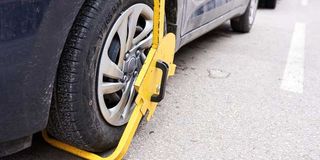
When driving, your eyes must not only be constantly attentive but also busy that they must make full us of both focused and peripheral observation.
With regard to an article you wrote recently, I agree with you that the role of “speed only” in road accidents is misunderstood. My take is that many accidents would be prevented if road users, especially pedestrians, cyclists and drivers, looked where they were going! MM
If there was a competition to find the most useless advice in human history, a leading contender would have to be the phrase: “Don’t drop it”.
Whether it’s said to a test cricketer or a waiter carrying a tray of wine glasses, or to a small child bringing a box of eggs downstairs, “don’t drop it” expresses the anxiety of the advisor but adds nothing, absolutely nothing, to the will or wisdom of the listener.
“Watch the ball”, or “mind the swinging door” or “grip tight and be careful” may be gratuitous alternatives, but they do at least offer practical suggestions on technique. Parents take note!
In contrast, another superficially banal phrase — but one of the most universally useful bits of advice— is “look where you are going” . For while holding catches and not dropping fragile cargo are automatic priorities needing no further reinforcement, the concept of looking where you are going is often wholly ignored. Not only, but not least, by road users.
Certainly, good driving demands a wide field of vision and the assimilation of a great many visual clues in the direct line of movement and either side…and even behind, with the assistance of a rear view mirror.
But the many things to watch do not include the tuning knob on a car radio, or “irrelevant” off-road or in-car distractions, and perhaps least of all on the screen of a mobile phone!

Driving is a full-time job, especially for the eyes. They must not only be constantly attentive but also so busy that they must make full use of both focused and peripheral observation. Optimum management of what they are looking at and when is not just a question of acuity and alertness – it is a fundamental must-do, and skill that has to be learnt and continually developed.
And what they see must be interpreted, quickly, accurately, in processing the visual information itself and in deciding the priority of what they should look at next. Split second by split second.
They must also decide what not to look at…for too long. A number of advanced driving techniques address what is known as visual “fixation” – a natural tendency to focus on one compelling thing (usually in the close foreground) at the expense of other potentially crucial visual clues further ahead or just off to one side. This tendency is most common, and often most dangerous, when a driver is tired or has lost concentration, or when overall visibility is poor.
Drivers are especially prone to fixation on the tail lights of the car in front when driving in fog…simply because they are easier to see than anything else. They are indeed an important reference point, but they are so easy to see that that locator can be left to peripheral vision, while focused observation looks for things that are more difficult to see.
In driving, the imperative to “look where you are going” has crucial meaning on many levels: where you are, what is immediately ahead and what is further ahead and, in all those contexts, what other road users are doing (or likely to do).
There’s no room (absolute zero) in that for a mobile phone, which diverts not only the eyes but also the mind and at least one hand.

Of course we all think we can multi-task (give our attention to several things at the same time). True, but that capacity is universally over-estimated. So don’t forget that when driving there is one task which takes full-time precedence over all others. Look — and fully understand and assess —where you are going and what others are doing.
May Day! May Day! No signs of the times

I have more than once been “clamped” (or had to pay an informal forgiveness surcharge) for failing to pay a parking fee…in places where there was nothing to indicate that a fee was payable. Is there a way of knowing where, at what times, and how a fee should be paid? Dot.
Almost anywhere you park today requires the payment of a fee — even in quite small up-country towns where there are plenty of empty spaces.
The concept of a parking tax is common, almost everywhere in the world. What makes our version different, and especially nerve-wracking, is that there are often no signs of any sort to notify or to explain.
Fortunately, most people know the answers. You should assume the charge is payable almost everywhere. You can pay the person wearing a yellow dustcoat or through your mobile phone. The cost ranges unpredictably from Sh50 to Sh300, whether you park all day or for just a few minutes. The shop you have parked next to will know.
If you don’t know that, or can’t find a yellow coat, or forget, or think that the place or time you park is exempt (some times and places are), you can be clamped, spend hours finding the process and the person to get unlocked, and have to pay a fine of… several thousand shillings!
Officials pursue the clamping and fine outcome with exceptional diligence and sometimes cunning. And as with so many motoring punishments, the fine is not just money. It is a huge penalty in time.
The idea that you must pay to park is not unreasonable, but the lack of on-site information and signage is extraordinary. It would be unthinkable in other places north of the tropic of cancer, and in most places south of it, too.
But as I say, most people get to know the deal, so neither the cost nor the need for guesswork nor the instances of gross injustices for genuine “don’t know” is the prime cause for concern.
Much higher up the worry list is the administrative attitude that this situation represents; the fact that officials (not only but also not least in motoring) grant themselves sweeping authority to punish motorists without a smidgen of countervailing responsibility to explain or advise or inform or account for what they themselves do…or don’t do.
When have you ever heard of a road administrator being punished for failing to do what they should do?
The real problem — that turns even something as banal as a parking ticket into a major national issue —is that the public apparently think this situation is okay. Everybody moans, but no one takes any proper remedial action, either individually or institutionally.
It is that, not fees or fines, that should make us shudder.
When will it be time to cry “enough!” How, and by whom, and to whom, should that shout be uttered? Given today’s date, how about this for an initial distress call: “May Day! May Day!”









